Table of Contents:
While it’s quite obvious that Mexico has some of the best beaches and food in the world, this country has also a lot to offer for the people of faith. In this post, we will focus specifically on the best sites for the Catholic pilgrimage to Mexico.
Over 80% of Mexicans claim to be Catholics, so there are many amazing sacral buildings all over the country. From famous Guadeloupe to less-known sites like Uxmal- we’ve covered it all!
Here’s a map of the best places to visit during the catholic pilgrimage to Mexico that you can find in this article:
La Catedral Metropolitana, Mexico City
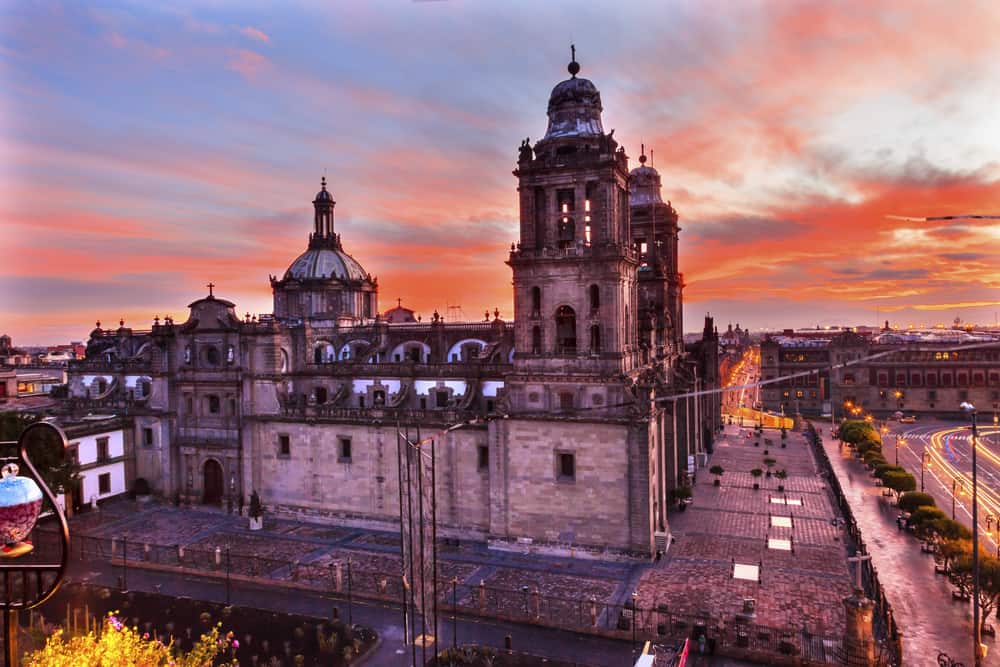
The heart of Mexico City is La Plaza de la Constitución, one of the largest city squares in the world. More commonly known as El Zócalo, this was the main ceremonial center of the capital Tenochtitlan during Aztec times.
When the conquistadors arrived, the city and plaza were redesigned using stones from the original Aztec structures. One of the buildings constructed was La Catedral Metropolitana de la Asunción de la Santísima Virgen María a los cielos (The Metropolitan Cathedral of the Assumption of the Most Blessed Virgin Mary into Heaven).
The Cathedral Metropolitana was built atop the Templo Mayor (the Great Temple). Today it’s one of the top places to visit in Mexico City.
Sitting to the north of the Zócalo, the Cathedral Metropolitana is the oldest and largest cathedral in Latin America. Construction on the cathedral started in 1573 and continued throughout colonial rule. The result is an enormous, imposing structure featuring a smorgasbord of architectural styles.
The gilded 18th-century Altar de los Reyes (Altar of the Kings) takes top billing in the cathedral’s list of things to see. Located behind the main alter, this elaborately decorated altar was built in cedar and then gilded. The size and depth of the altar have given it the nickname la cueva dorada (the golden cave).
Other highlights included the gilded Altar de Perdón (Altar of Forgiveness) and the Señor del Veneno (Lord of the Poison). Legend has it that this figure of Christ turned black when it was kissed on the feet by a clergyman who had been poisoned.
Sanctuary of Santo Niño de Atocha in Zacatecas
The Holy Infant of Atocha is an image of Baby Jesus, popular mostly among Hispanic people.
According to the legend, the Holy Infant of Zacatecas has been responding to miner’s wives’ prayers, when their husbands were in danger.
Every time they needed help, the image of Baby Jesus disappeared from the church and appeared in the mine, giving the trapped men water and showing them a way out.
After these miracles, Zacatecas has become one of the best places to visit during the pilgrimage to Mexico.
Teotihuacan

Not only is the ancient city of Teotihuacan one of the wonders of Mexico, but it couldn’t be easier to visit from the capital.
Mexican Catholics believe that our Lady of Guadeloupe (also known as the Blessed Mother) first appeared to St. Juan Diego at the Teotihuacan pyramid site in 1531. Today, pilgrims first take a trip to the pyramids to understand the impact this apparition had on the indigenous catholic saint. By visiting Teotihuacan, you can better understand how prehispanic religion and catholicism began to merge after the colonization of Mexico.
As pilgrimage sites in Mexico go, Teotihuacan is one of the oldest. It’s estimated that building started around 400 BC, making it over 2,400 years old! It’s known that the city reached its peak 800 years later in the year 400 AD when it became the sixth-largest city in the world with a population of 200,000.
Today the enormous pyramids can still be climbed to the top. The most famous is the Pyramid of the Sun, connected to the Pyramid of the Moon and the Pyramid of the Feathered Serpent by the Avenue of Death.
Many people think Teotihuacan is an Aztec settlement and indeed, it was the Aztecs who gave the temples their names. However, they were actually built by the lesser-known but just as influential group, the Aztecas who resided around the area now known as Mexico City.
To visit Teotihuacan, you can take a day tour from Mexico City or catch the local bus to save some pennies. You might want to hire a local guide while there to learn about history. Whatever you go, go early to beat the heat and the crowds. For a real Mexico bucket list experience, consider hot air balloons over the pyramids!
Basilica of Zapopan
It’s one of the most important catholic pilgrimage sites in Mexico.
The majestic basilica was built in the 17th century. It’s also when the annual pilgrimage from the Cathedral of Guadalajara to the Basilica de Zapopan started.
Back in 1634, the diseases and heavy storms plagued the city of Guadalajara. Local authorities thought that maybe “a visit” of the Virgin Mary would make things better. On October, 12th, they asked Franciscans to carry the statue of Our Lady to the city.
It helped! That’s why this pilgrimage is repeated annually on October, 12th and the statue has been declared a patron against epidemics.
Uxmal
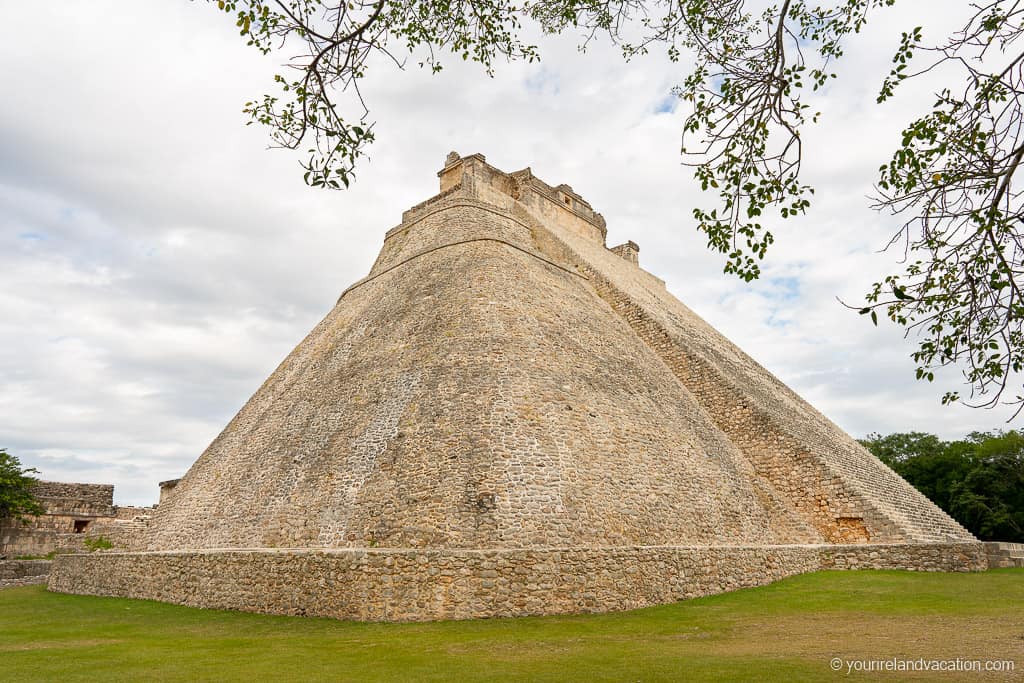
The ruins at Uxmal on the Yucatan Peninsula are some of the most impressive in Mexico. Before being abandoned in the 10th Century, Uxmal was considered the religious center of the surrounding Maya cities and was inscribed as a UNESCO World Heritage Site in 1996.
The archaeological zone at Uxmal spans over 150 acres and contains three notable structures: The Pyramid of the Magician, the Nunnery Quadrangle and the Governor’s Palace.
The massive Pyramid of the Magician is the first building that visitors see upon entering the site and is one of the best examples of Mayan pyramids in the Yucatan. The Pyramid of the Magician is the subject of many legends surrounding Uxmal, the most popular being that the pyramid was erected in a single night by a magician god using only might and magic.
The Nunnery Quadrangle is located behind the Pyramid of the Magician and consists of a large courtyard surrounded by 4 palaces. It was named the Nunnery Quadrangle due to its resemblance to a convent.
The Governor’s Palace is the most impressive building in Uxmal and is aligned with the planet Venus. This elevated temple sits atop a three-tiered platform and the exterior is adorned with 400 Venus glyphs.
Uxmal is located around 80km south of Merida and is most easily accessed by car. Visitors can tour the site independently but many hire a guide for a private tour of the ruins. Due to the scale of the site it takes around 3-4 hours to visit Uxmal.
The Templo de Santo Domingo in Oaxaca
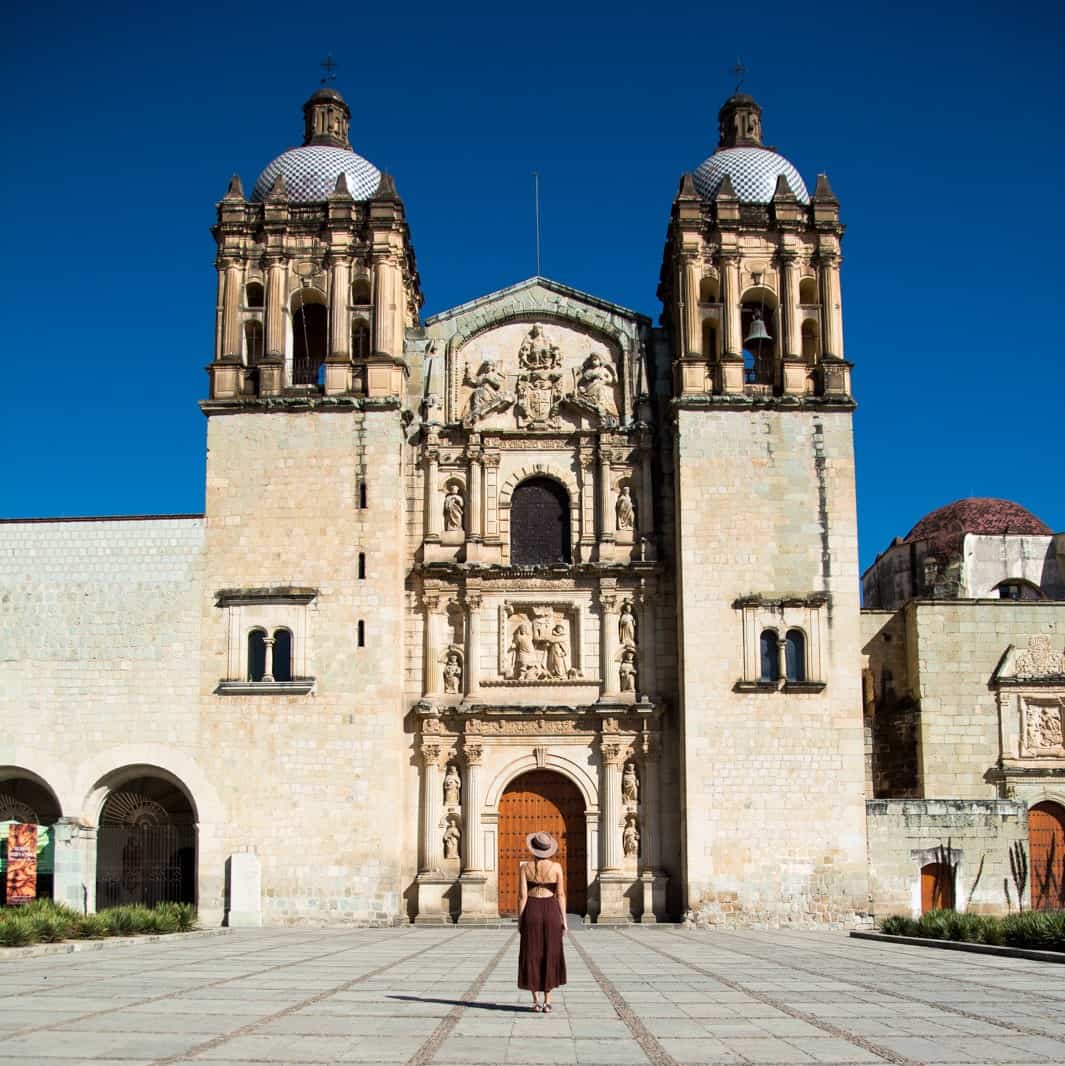
The Templo de Santo Domingo is a truly magnificent church. In fact, it is often considered one of the most beautiful churches in Mexico.
It’s located right in the center of Oaxaca City and it looks imposing already from the inside… but wait till you see the inside. Going there is one of the best things to do in Oaxaca even if you’re not Catholic or religious at all.
It was formerly a monastery built by the Dominican Order in the 16th century and it’s still beautifully preserved. Built in the over-the-top Mexican Baroque style, the church’s interiors are full of gold and intricate designs. The Capilla de la Virgen del Rosario (the chapel) is the gem inside the church… so don’t just admire this church from the outside!
Tons of Catholics from all over the state of Oaxaca (and Mexico) come to pray at the Templo de Santo Domingo, and it’s the dream of many to be married here. If you can witness a wedding, don’t think twice. After a wedding, usually, there are beautiful parades along the pedestrian street that come with music and dancers.
Our Lady of San Juan de los Lagos
Nearly 10 million people are visiting the basilica of Our Lady of San Juan de los Lagos, which makes it one of the most popular pilgrimage sites in Mexico.
Cholula Pyramid
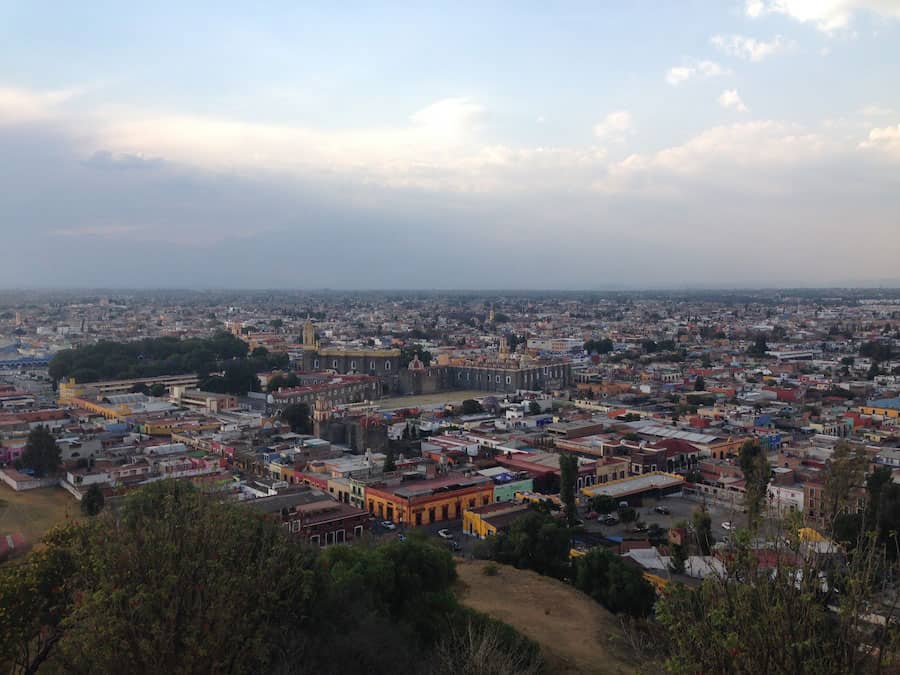
When looking for the best Pilgrimage sites in Mexico remember to check out Cholula.
If you are already familiar with Mexican Culture you know that the land is uber-religious with many people’s lives revolving around Catholic traditions.
Cholula is classed at a Magic town in Mexico and is easily located from the city of Puebla. It’s a place that John Paul 2nd visited during his pilgrimage to Mexico.
From Puebla, you’ll arrive in Cholula via a local bus. It is said that once arriving in Cholula you can head straight for the Pyramid without realizing. This is not because the Pyramid of Cholula is a hidden archaeological site, its because from a distance it does not look anything like a pyramid.
When you look at any map of Latin America and zoom in on Mexico: you’ll find many pyramids, but nothing like this one. The unique thing about it is that the pyramid doesn’t stand out like the ones that you would see in places like Teotihuacan. It frankly looks like a giant grass hill.
However, one of the most important feats of the Pyramid is the Iglesia de Nuestra Señora de Los Remedios which in English means ‘Church of Our Lady of Remedies’. This special church which is painted yellow and has a giant bell.
The church was essentially built during Spanish colonial times and was a prominent Pilgrimage destination as well as a sacred site used for religious celebrations. Due to the history and significance of the church the pyramid remains in the same state as when it was first excavated in 1931 by archeologists.
All in all, Cholula is an amazing little gem to stumble upon during any Catholic trip to Mexico.
Basilica of Our Lady of Guadalupe
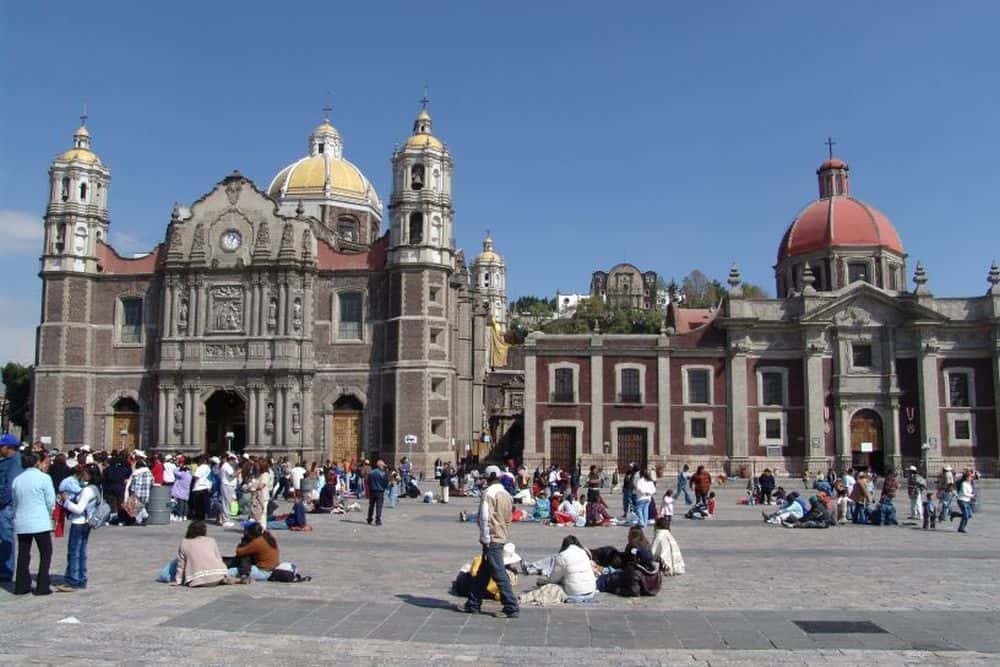
Thousands of pilgrims arrive here daily to view the cloak, some of them traveling the last few meters on their knees. The original basilica that was built in the 1700s still stands, but it can no longer accommodate the huge numbers of pilgrims, so a much larger, modern basilica has been built next to it. This is where the cloak is kept on display, and moving walkways have been installed to keep the crowds flowing.
While Our Lady of Guadalupe has become the patron saint of Mexico and is often depicted with Mexican facial features, her veneration originated in Spain. More specifically, in a small town called Guadalupe in the remote Extremadura region. Many of the conquistadores were from Extremadura, and they brought their devotion to Our Lady of Guadalupe with them to the New World.
Sanctuary of Chalma
One of the most important sites for a pilgrimage to Mexico, a place where you can find the famous “Black Christ” on a cross.
According to the legend, Jesus Himself miraculously appeared in a cave where pagans have been worshiping their god throughout the ages.
Sanctuary of Chalma is one of the many Catholic sites in Mexico that were converted from the indigenous shrines.
Franciscan Monastery in Izamel
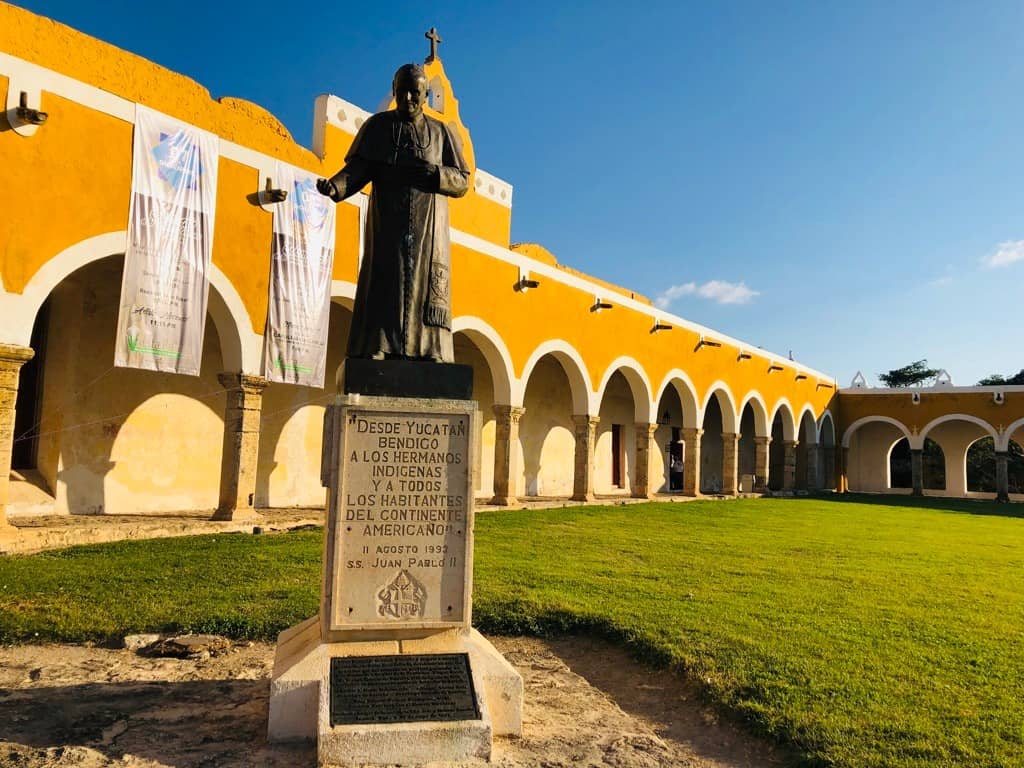
Cristo Rey on the top of Cerro del Cubilete Mountain

Pin For Later:
Did you enjoy reading this post about the best Catholic pilgrimage sites in Mexico? Share your thoughts in comments!

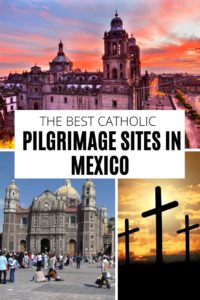


2 Responses
Do you have a pilgrimage from San Francis co to Our Lady of Guadeloupe in Mexico
No, we don’t offer tours.